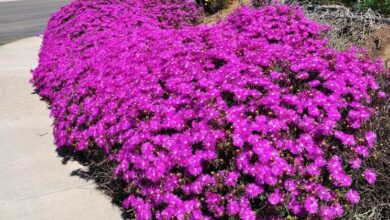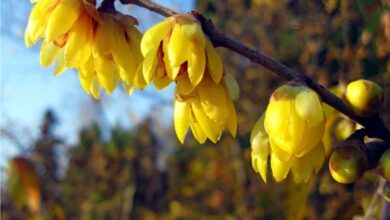Bear skin fescue (Festuca gautieri)

The Festuca gautieri and due to its particular characteristics, has earned a leading place in the ornamental garden for its dense cushions of bluish or bright green color and its tolerant nature, both to cold and to hot or dry seasons.
Known as Bearskin Fescue, it is an interesting-looking plant, belonging to the Poaceae family, that forms a tuft that grows in the shape of a pin-shaped cushion up to approximately 25 cm in height.
Characteristics of the Festuca gautieri

The leaves are needle-shaped and pointed, bright green to bluish-gray in color, and about 5 to 15 cm long. Short rhizomes, their flower stalks are 20 to 50 cm long and bear the flowers in a seed head (or panicle) 4.5 to 7 cm long. Each panicle contains a few flowers (spikelets) that are 9-11mm long.
Origin and habitat
Its origins date back to southwestern France and north-eastern Spain, it is also wildly distributed in the United Kingdom. It grows in a range of altitudes similar to its natural state, so it can be seen from the coastal areas to the mountains of the Pyrenees. It is also dominant in serum subalpine calcareous grasslands, where it grows in dry, rocky, less fertile, but well-drained and sunny conditions.
Applications
In the same way that a painting improves its appearance when placed in a frame, so does certain plants that look better, if they are surrounded by a beautiful plant frame. Hence, one of the most striking ways to frame a plant is using certain types of ornamental shrubs, which do not necessarily have to be green.
In nature there is a variety of colors and textures of ornamental plants, to satisfy all tastes. One of them is undoubtedly the Festuca gautieri, appropriate for cold regions, where it looks better in cold season. This plant forms a kind of tuft of soft foliage that takes on a grayish-blue or bright green plant pillow appearance. It offers a wonderful appearance, when planted covering the soil around species such as palms and cycads or between brightly blooming dwarf aloe hybrids and in dense patches in the foreground of a mixed border.
Plantation
Like most of its species, it prefers stony and sandy soils in the open air, but still tolerates partial shade. However, it is suitable for all types of well-drained soils or exposures, including poor soils. Due to its vigor, it supports both droughts and frosts.
Preferable planting in spring or autumn, because it does not present problems due to humidity. It is important that the land chosen for your plantation is very clean. If this is very heavy, you can add gravel to the hole to be used. Try to leave a space of 15 to 30 cm between plants, depending on the size you think they can reach. Water during the following weeks, this will facilitate the rooting of the Fescue.
If you want to plant in pots, then prepare a mixture that drains well and preferably contains pozzolana or also coconut fiber. Similarly, add vermiculite to allow the substrate to air out. The Festuca is propagated by seed, by species, tuft division and by varieties. You can sow the seeds in the fall or spring. Planting in a pot or box is recommended that you can place in a cold frame in winter season or in an exposed nursery.
Diseases, pests and parasites

It is a plant resistant to diseases and parasites, even to humidity.
Care
It does not need more maintenance. Water moderately until summer after cultivation, once the plant is well rooted, irrigation will not be necessary. If it is planted in pots, then water but always ensuring that the substrate dries between waterings. Remove the discolored parts and before beginning the vegetation during the spring, clean the strands by removing the parts that are dry with your hand or a suitable implement. This practice will help the longevity of your plant. Remember that this is a short-lived plant.




